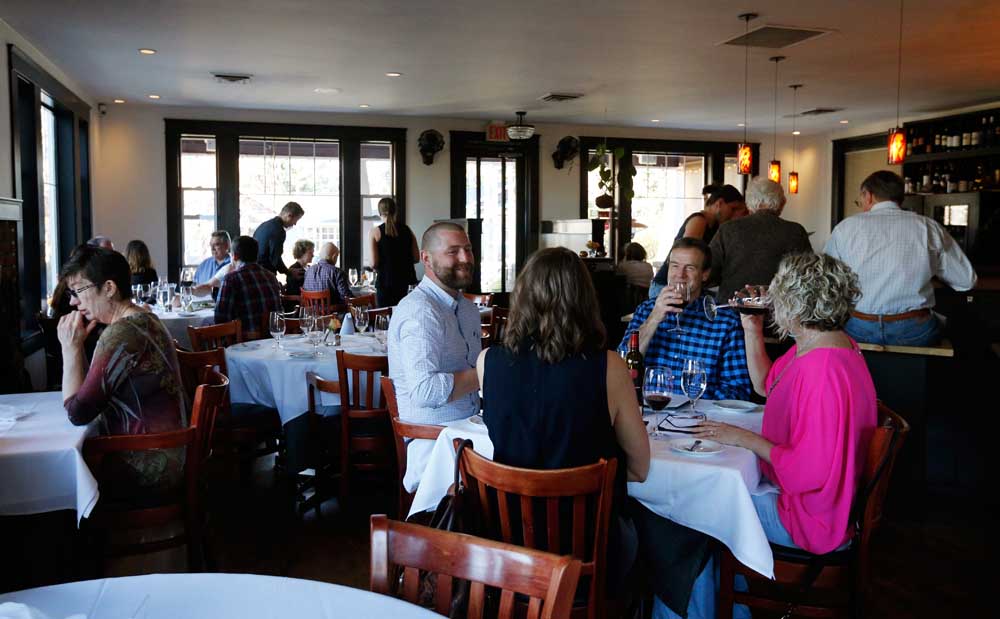Restaurant review: In awe of Ariana
Published 12:00 am Friday, April 8, 2016

- Ariana Restaurant (Submitted photo)
If there is a perfect restaurant in Bend, it just may be Ariana.
In the 11½ years of its existence — since first welcoming guests in December 2004 — the Galveston Avenue restaurant has secured its reputation as Central Oregon’s “go-to” destination for fine, special-occasion dining.
Trending
Blending an aptitude for the full range of Mediterranean cuisines with an unquenchable thirst for knowledge of new techniques and ingredients, husband-and-wife owner-chefs Andrès and Ariana Asti Fernandez have turned a former coffee house into an intimately romantic space where quality of food is matched by consistently outstanding table service.
Graduates of the Cascade Culinary Institute (Andrès is from Bogotà, Colombia; Ariana from Humboldt County, California), the couple met in 2002 when they were employed in the kitchen at Merenda (now 900 Wall). Assisted by Ariana’s parents, Glenn and Susan Asti, they established their own restaurant and, almost in the blink of an eye, started a family: Their daughter Gabriella is now 8, Isabel 5.
That could not have been simple. Their culinary philosophy, however, is uncomplicated.
“The less we put on a plate, the better,” Andrès said.
“We want to allow you to taste what you order. We want to keep the flavors clean.”
Part of the reason for the restaurant’s success, Ariana said, is that one or both of the chefs is in the kitchen every night, Tuesday through Saturday, assuring consistency even as the menu evolves seasonally. “This is a labor of love for us,” she said.
Trending
Candlelit service
My companion and I always enjoy our meals at Ariana, which seats three dozen diners beside a fireplace, with candlelit, white-tablecloth service. Reservations are more or less essential for these tables, but walk-ins are welcomed at 10 additional seats at the restaurant’s central bar.
On our most recent visit, we were warmly greeted at the door, promptly seated and walked through the food and wine listings by one of the city’s most knowledgeable veteran servers, Ron Lybeck, previously of 900 Wall and Trattoria Sbandati. Once our order was placed, we were presented with an amuse bouche of mild Manchego, a Spanish sheep’s-milk cheese, seasoned with honey and sprinkled with smoky crushed almonds.
Each of us ordered a seafood appetizer followed by a salad and a meat entrée. My Sicilian-style calamari rings and tentacles were simmered in a spicy tomato sauce with currants, capers and orzo-like fregula pasta. “Prawns ajo blanco” showed a North African influence with a hummus-like almond-and-garlic paste, seasoned with spicy harissa peppers, cilantro and sherry wine vinegar.
Hazelnut-mint pesto added a wonderful flair to peppery arugula and burrata cheese in my stracciata salad, presented as well with asparagus and radish. My companion’s salad of roasted golden and red beets, tossed with watercress greens and a shallot vinaigrette, was finished with a savory sachet of chèvre goat cheese baked on top.
As a main course, my companion opted for a beef short rib, slow-cooked for eight hours. It was served with sweet peas and shoots, carrot purée and horseradish cream to add spice. My thick and tender pork chop, finished with a Spanish romesco sauce of hazelnuts and red peppers, was served with a potato croquette and Catalan spring onions.
Everything we sank our teeth into was absolutely wonderful. Even as I recall the meal, my mouth is involuntarily watering.
Tasting menu
One great way for diners to experience Ariana’s offerings is on a five-course tasting menu ($65 without wine pairings). “People are more likely to try new things as part of a tasting menu,” Ariana noted. “They may not order them directly off the regular menu, but they seem to trust us when they are part of a greater meal.”
A few times each year, Andrès prepares a special Colombian meal in deference to his roots — and his grandmother’s South American recipes.
That’s not new for him, unlike the Peking duck that he prepared for the first time a week ago. So, too, was sous-vide cooking, a process of slow-steaming food in airtight plastic bags that he wasn’t taught in culinary school.
“When it’s something new and different, we learn it ourselves,” he said, often by trial and error before it’s ever introduced to patrons.
“We are always learning and studying,” he said. “The restaurant grows as we grow.”
— Reporter: janderson@bendbulletin.com.








